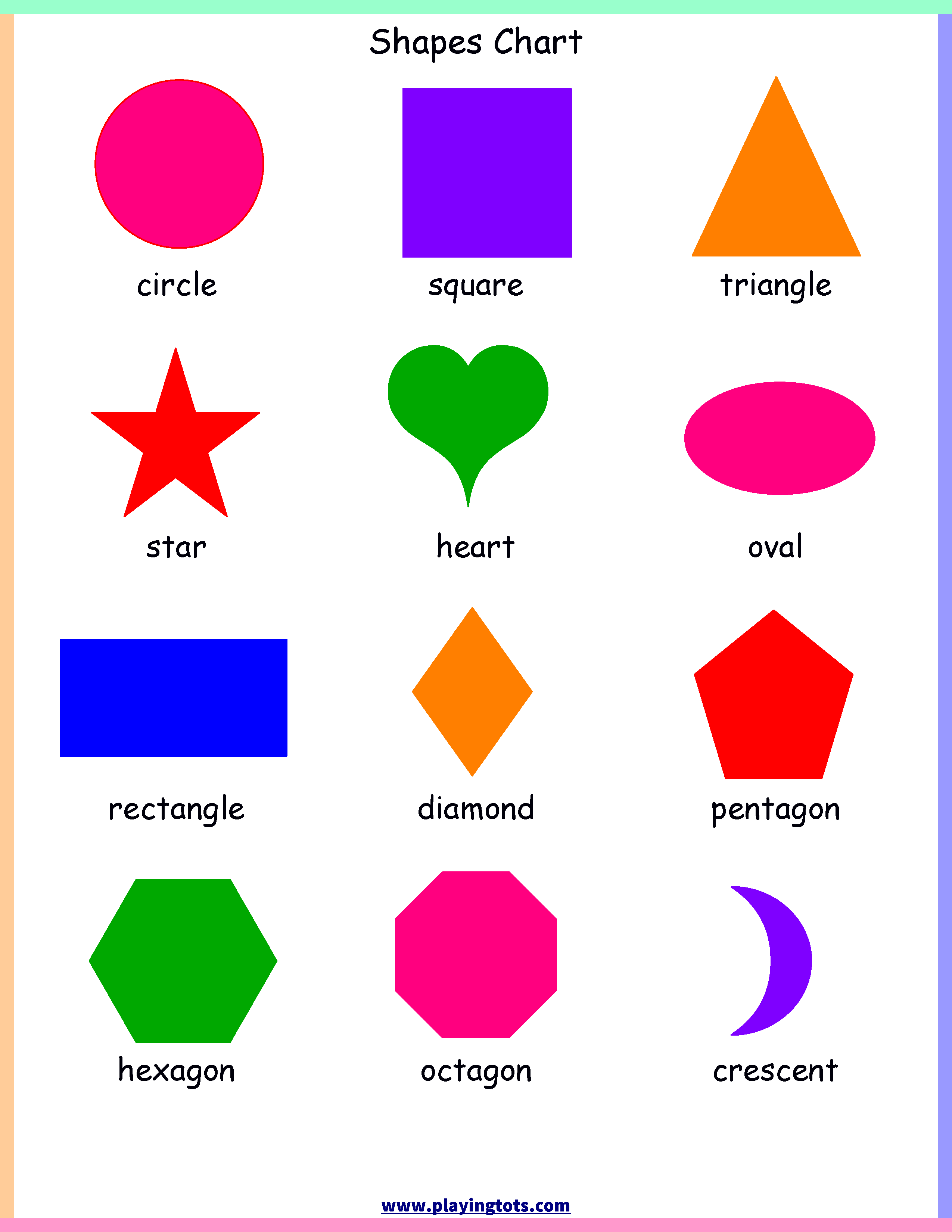Shapes are a fundamental element of our daily lives. Whether we’re talking about geometric shapes, 3-D shapes or even organic shapes, we come across them in every aspect of life. From the objects around us to the makeup of our environment, shapes play a vital role in the understanding of our world.
Printable Shapes Chart
 This printable Shapes Chart is an amazing resource to have on hand. Whether you’re a parent educating your child or a teacher trying to teach your students, this chart serves as a great visual aid. The chart includes all the basic 2D shapes like circles, triangles, squares, rectangles and even trapezoids. Each shape is shown along with its name, so children can learn the names of different shapes. The chart can be used in a classroom setting or can be printed at home for personal use.
This printable Shapes Chart is an amazing resource to have on hand. Whether you’re a parent educating your child or a teacher trying to teach your students, this chart serves as a great visual aid. The chart includes all the basic 2D shapes like circles, triangles, squares, rectangles and even trapezoids. Each shape is shown along with its name, so children can learn the names of different shapes. The chart can be used in a classroom setting or can be printed at home for personal use.
Understanding Geometric Shapes
Geometric shapes are considered the most basic of shapes. These shapes are made up of points, lines, and planes and can all be classified according to their properties. For instance, triangles can be classified according to the length of their sides and the angles they form. Geometric shapes are used extensively in fields such as mathematics, engineering, architecture, and even art.
The most basic geometric shapes are the circle, triangle, square, and rectangle. While some may argue that these shapes lack creativity or imagination, they are the building blocks of more complex shapes and objects. Every intricate shape can be broken down into simple geometric shapes.
3-Dimensional Shapes
3-D (three-dimensional) shapes are those that have height, width, and depth. These shapes are not flat like 2D shapes and can be held in the hand. Some examples of 3D shapes include spheres, cubes, cylinders, cones, and pyramids. These shapes are used extensively in the fields of architecture, design, and engineering. For example, an architect may use 3D shapes to visualize the structure of a building before construction begins.
Organic Shapes
Organic or freeform shapes are shapes that are irregular in nature and do not follow any set formula like geometric shapes. These shapes are often found in nature, such as the shape of a leaf or a rock. Organic shapes are often used in artistic works such as paintings, sculptures, and other works of art. In graphic design and web design, organic shapes are often used to create a more natural and flowing feel.
The Importance of Understanding Shapes
Understanding shapes is an important aspect of early childhood development. For instance, learning shapes helps children develop their cognitive skills and improve their memory. It also serves as the foundation for developing mathematical concepts and skills. Children who have a better understanding of shapes are often able to better understand and recall mathematical concepts such as fractions, decimals and even geometry.
Shapes are also an important aspect of design. Designers use shapes to create visually appealing artwork or to communicate a specific message. Understanding shapes can help designers create balance, symmetry, and contrast in their work. For instance, a designer may use circles to convey a sense of unity or togetherness whereas using triangles may convey a sense of strength and stability.
Conclusion
The world around us is full of shapes, and they play a critical role in our daily lives. Whether we’re talking about geometric shapes, 3-D shapes or organic shapes, they serve as building blocks for understanding the world around us. With the help of resources like the Printable Shapes Chart, children can learn the names of different shapes and develop the foundation for developing important mathematical concepts and skills. Understanding shapes also helps designers create visually appealing artwork that conveys a specific message or emotion.